Chmod
Option is an additional command to change the output of a command.

Chmod. How‐ ever, for each symbolic link listed on the command line, chmod changes the permissions of the pointed-to file. EXAMPLES chmod -w nowrite makes file nowrite read-only. Below is the command's general structure:.
This is not a problem since the permissions of symbolic links are never used. Chmod never changes the permissions of symbolic links;. This is not a prob‐ lem since the permissions of symbolic links are never used.
To change the permissions of multiple files and directories with one command. If you need to change a file permission, use the chmod command. One component can be computed by adding up the needed permissions for that target user base.
However, for each symbolic link listed on the command line, chmod changes the permissions of the pointed-to file. Chmod is a command used to change those file permissions and controls in terminals. The chmod system call cannot change their permissions.
Following is a sample of ls -l command output. This is equivalent to the command sequence:. Chmod changes the permissions of each given file according to mode, which can be either an octal number representing the bit pattern for the new permissions or a symbolic representation of changes to make, (+-= rwxXstugoa).
$ chmod u=rw,g=r,o= birthday.cgi In this file example, sets read and write permissions for user and group:. I’ll also explain some the popular terms like chmod 777 or chmod 755 or chmod -r. Chmod is a command in Linux and other Unix-like operating systems that allows to change the permissions (or access mode) of a file or directory.
In Unix-like operating systems, the chmod command is used to change the access mode of a file. The tutorial has been tested with Mozilla version 1.8 under Linux. And finally, make it so anyone in the same group can ready/write and execute directories/files in the web root.
Chmod means ‘change mode’ and it changes file or directory mode bits (the way a file can be accessed). For more information, including octal specification of permissions, refer to the Unix User's Manual pages for chmod(1) and ls(1). Group permissio view the full answer.
This ensures that only authorized users and processes can access files and directories. There are three sets of permissions. There are two ways to represent the MODE:.
Chmod never changes the permissions of symbolic links;. This is done with the chmod command. The name is an abbreviation of change mode.
To recursively set permissions of files based on their type, use chmod in combination with the find command. This is not a problem since the permissions of symbolic links are never used. The first element of the list must be the numeric mode, which should probably be an octal number, and which definitely should not be a string of octal digits:.
Man chmod man ls A variable called `umask' is used as a permission mask for all newly created files and directories. In Linux, access to the files is managed through the file permissions, attributes, and ownership. $ chmod a+rx pager.pl Next, sets read and write permission for user, sets read for group, and remove all access for others:.
Chmod Modifies File Permissions In Linux, who can do what to a file or directory is controlled through sets of permissions. These flags are called file permissions or modes, as in "mode of access." The command name chmod stands for "change mode." It restricts the way a file can be accessed. More of a permission mechanism though.
$ chmod a-x myscript.sh Adds read and execute permissions for everyone (a):. Basically, it allows or disallows modifications of the file. $ chmod u+x filename 2.
That looks like this:. One of the most popular options that you can combine with chmod and chown is -R (Recursive). You can combine multiple references and modes to set the desired access all at once.
The chmod system call cannot change their permissions. Chmod LIST Changes the permissions of a list of files. Add multiple permission to a file/directory.
In this article, I’ll share with you some of the practical examples of chmod command. With great power comes great responsibility, and there’s no denying that the chmod command is an extensive and powerful. $ chmod ug=rw /var/www/html/data.php.
The request is filtered by the umask. But it will show the output only if there is any changes in permission. To remove the write permission for others for file2:.
From one to four octal digits Any omitted digits are assumed to be leading zeros. One set for the owner of the file, another set for the members of the file’s group, and a final set for everyone else. Chmod command with argument -c also do’s the same thing as Verbose output (i.e.
Chmod 777 is one of those file control mechanisms. 0644 is okay, but "0644" is not. The chmod command is used to change the various permission bits of a file or directory.
(O)thers can read, can't write and can execute. Using symbolic modes (letters to indicate the categories and permission). You can easily access the man-pages by typing 'man' at the command prompt The expression 'man chmod ' for example will bring up the man-page for the chmod feature that lets you change file access permissions.
This would grant all users and user groups with read and write access to your file, as well as allow all users to execute the file. Change permission for all roles on a file/directory. Sooner or later in the Linux world, you will have to change the permission on a file or directory.
Recursive chmod with -R and sudo. Chmod never changes the permissions of symbolic links. This is not a problem since the permissions of symbolic links are never used.
To add read and write for user, without affecting any other permissions (e.g. Back to Dave Eisenberg’s Home Page. Chmod stands for “ Change Mode ” and is used to modify the permissions of files and directories in a Linux based system.
However, for each symbolic link listed on the command line, chmod changes the permissions of the pointed-to file. Can the script only read the info, or can it write information as into it as well. Chmod u+x will made the file executable for your user (it will only add it for your user, though it may be already executable by the group owner, or "other").
$ chmod -c 755 file.txt mode of 'file.txt' changed from 0777 (rwxrwxrwx) to 0755 (rwxr-xr-x). The name is an abbreviation of change mode. Additional restrictions may cause the set-user-ID and set-group-ID bits of MODE or RFILE to be ignored.
$ chmod u+r,g+x filename 3. Chmod changes the file mode bits of each given file according to mode, which can be either a symbolic representation of changes to make, or an octal number representing the bit pattern for the new mode bits. Chmod - Unix, Linux Command - chmod - To change access permissions, change mode.
Chmod 755 -R /opt/lampp/htdocs will recursively set the permissions. Chmod - What is it?. Mykyta Dolmatov / Getty Images.
The chmod command with the -R options allows you to recursively change the file’s permissions. Using Options with chmod and chown Commands. If you do this to a directory, it makes the directory searchable, instead.
Chmod +hrs sysfile sets the hidden, read-only, and system attributes for sysfile. A guide for Windows users. The chmod command, like other commands, can be executed from the command line or through a script file.
The chmod command changes the access permissions of files and folders. The all (a) mode is the same as ugo, allowing the previous command to be. (G)roup can read, can't write and can execute.
This is a tutorial that teaches the UNIX ®/Linux ® chmod command. In Unix and Unix-like operating systems, chmod is the command and system call which is used to change the access permissions of file system objects (files and directories). If you need to list a file's permissions, use the ls command.
Chmod go-w+x mydir This denies group members and others the permission to create or delete files in mydir (go-w) and allows group members and others to search mydir or use it in a path name (go+x). Another way of assigning permissions is by using the text notation. Description chmod changes the access permissions, or modes, of the specified file or directory.
On Unix-like operating systems, a set of flags associated with each file determines who can access that file, and how they can access it. To change the permissions — or access mode — of a file, use the chmod command in a terminal. Use comma to separate the multiple permission sets as shown below.
Chmod stands for Change Mode and is a command often needed for installing scripts (CGI, PHP etc.) on a UNIX server, after uploading the file (with FTP) you may need to change the permissions.Basically it tells the server who can make what changes to the file or folder, i.e. How to use chmod?. The chmod() function changes permissions of the specified file.
Chmod g-w mydir chmod o-w mydir chmod g+x mydir chmod o+x mydir. In contrast, chmod ignores symbolic links encountered during recursive directory traversals. I.e., you can list the contents of a directory that you have +x.
Returns the number of files successfully changed. Chmod a=rwx file turns on read, write, and execute permissions, and turns off the hidden, archive, and system attributes. Chmod stands for change mode, which changes the file or directory mode bits.
Chmod clears the set-group-ID bit of a regular file if the file's group ID does not match the user's effective group ID or one of the user's supplementary group IDs, unless the user has appropriate privileges. It is also used to change special mode flags. $ chmod 755 -R directory_name $ chmod 755 -R /home/linuxtechi/data Example 3) Assign permissions using text notation.
$ chmod -R go-rwx /var/www. Chmod command is used to set file permission in linux/unix system. The command takes the general form:.
However, for each symbolic link listed on the command line, chmod changes the permissions of the pointed-to file. If you are assigning same permission then it won’t show any output. The permissions are as follows:.
Linux on the desktop:. Chmod 755 Chmod 755 (chmod a+rwx,g-w,o-w) sets permissions so that, (U)ser / owner can read, can write and can execute. Please note the warning in the chmod with sudo section and the Warning with Recursive chmod section.
The mode parameter consists of three octal number components specifying access restrictions for the owner, the user group in which the owner is in, and to everybody else in this order. 755 can be separated as. $ chmod -R g+rwx /var/www.
There's no way to set the permissions for files automatically in only this directory that are created after you set the permissions, but you could change your system-wide default file permissions with by setting umask 022. There are 3 types of access level permission which unix gives. You can change file permissions in this format:.
For example, to explicitly make file3 readable and executable to everyone:. In this method, the chmod command takes flags or symbols which represent the owner, group, others or all users ( u, g , and o) in the syntax. This website has a very useful little grid checkbox thing, whereby you can tick the options you want and it gives you the command:.
Introduction Multi-user systems, such as Linux, require setting up and managing file permissions that ensure only authorized users have access to files they are supposed to. It presumes that you already know how to use the ls command to list the contents of a directory. $ chmod u-rx filename 4.
In this, the 9 characters from 2nd to 10th position represents the permissions for the 3 types of users. By using this command, we can set the read, write, and execute permissions for all three of the permission groups (Owner, Group and Other) in Linux. Chmod +x or chmod a+x ('all plus executable bit') makes the file executable by everyone.
You can use chmod in the command line to change file or directory permissions on unix or unix-like systems such as linux or BSD. Umask is a 3 digit octal number. Following example removes read and write permission for the user.
To change all the permissions of each file and folder under a specified directory at once, use sudo chmod with -R. Chmod never changes the permissions of symbolic links, since the chmod system call cannot change their permissions. $ chmod -R g+rx /var/www.
Understanding the Linux systems helps make your system secure by restricting access to your files. To put it simply, use chmod command to change the file or directory permissions. Chmod is Linux command used to change file permissions.chmod changes user, group and other read, write and execute permission.chmod 755 is popular use case for chmod .chmod 755 is generally used to make most of the operations without problem because it provides ease for system administrators while running applications.
If you have any questions or feedback, feel free to leave a comment. Remove permission from a file/directory. (Modes determine who can read, write, or search a directory or file.) Users with read access to SUPERUSER.FILESYS.CHANGEPERMS (a UNIXPRIV class profile), can use the chmod command to change the permission bits of any file.
To view these online, enter. This tutorial covers how to use the chmod command to change the access permissions of files and directories.

Xampp On Windows 7 Set Chmod Stack Overflow

A Unix And Linux Permissions Primer Daniel Miessler

8 Linux Chmod Command Examples To Understand It The Linux Juggernaut
Chmod のギャラリー
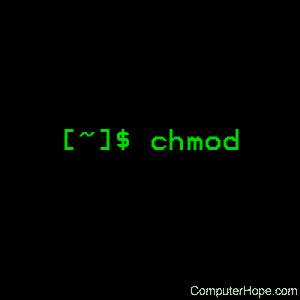
Linux Chmod Command Help And Examples

Chmod Permission On Bash Install Issue 38 Sdrausty Termux Archlinux Github
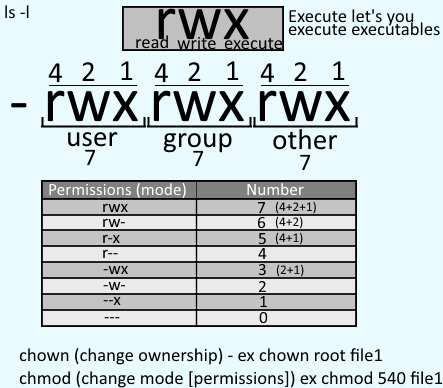
Freekb Linux Commands Chmod Change A File Or Directory Standard Permissions

Common Bash Commands

When Sudo Chmod 755 Library Tomcat9 Bin Sh Occurred An Error Stack Overflow
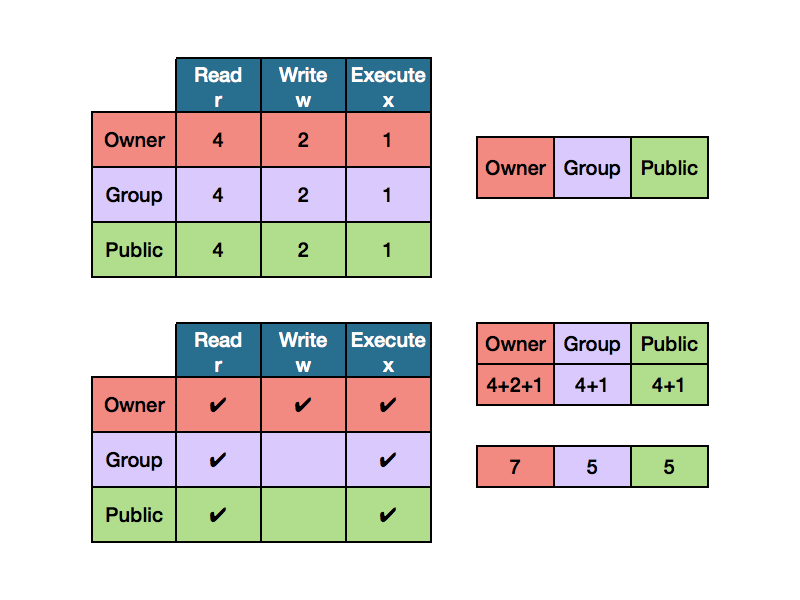
Chmod Tutorial This Is A Quick Alternative Tutorial On By Ryan Morrison Medium

Numeric Permissions Table Linux Chmod Command Linux Permissions

Chmod Wikipedia

Linux Terminal File Permissions Chmod Chown And Chgrp Youtube

How To Change File Permissions Recursively With Chmod In Linux
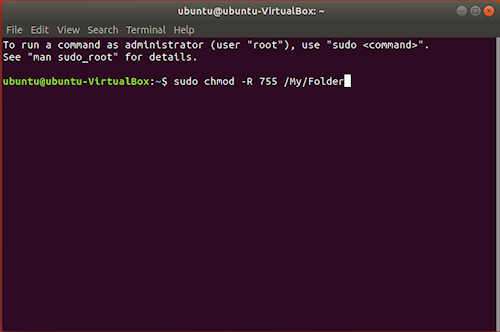
Introduction To Linux File Permissions Attributes Chmod Globo Tech
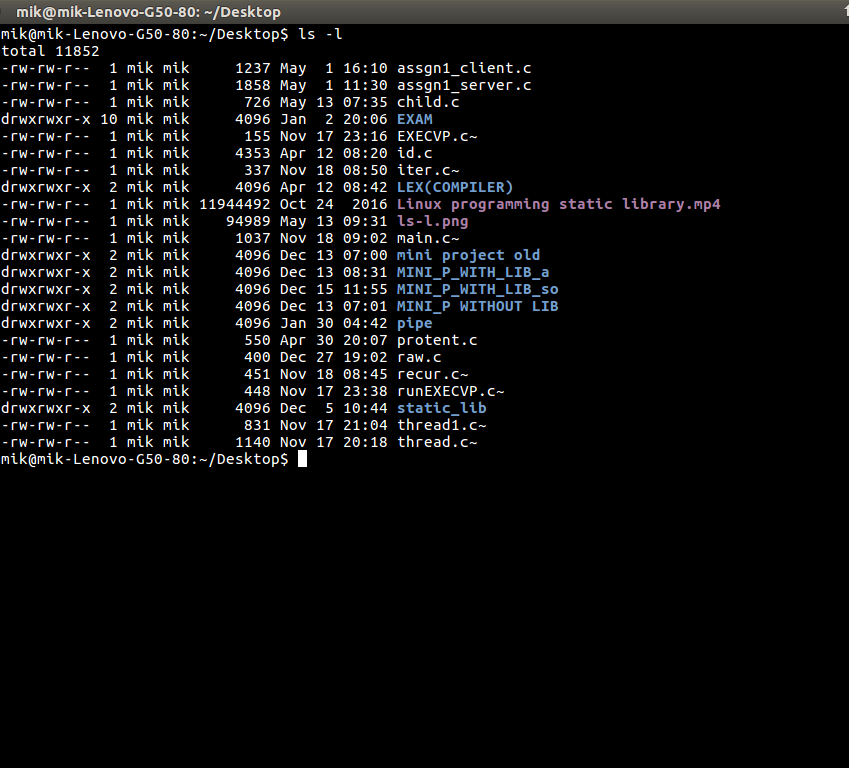
Chmod Command In Linux With Examples Geeksforgeeks

How To Use Chmod Command In Linux Explained With Examples

Permissions Reverting From Executing Chmod By Mistake Ask Ubuntu

Explain Absolute And Relative Permission Using Chmod Linuxteach

Permissions How Can I Restore The Executable Bit Of Bin Chmod Ask Ubuntu

Chmod Calculator Takes The Hassle Out Of Directory Permissions Techfruit

This Chmod Calculator Makes Creating Chmod Commands A Cakewalk Hongkiat
Q Tbn 3aand9gcs Trmaopb41lzfo2wl Mi6olorurkywaddbudhnw Ne1mor3ct Usqp Cau

Chmod Command

How To Use Chmod And Chown Command In Linux
:max_bytes(150000):strip_icc()/i7guGwCYcn-34e068e148ae4e918b29c86cd2d5740e.png)
Configuring Unix Linux File And Directory Access Rights

Chmod 777 In Terminal The Command To Make All Changes Affect Every File And Folder Ask Ubuntu
Q Tbn 3aand9gcs J72hjomdluhqe6xjivy M6yrjmkqx9x3z3ps Rpnb8by3w7z Usqp Cau

Unix Permissions The Easy Way Index Of All Chmod Permutations By Semi Koen Sep Towards Data Science
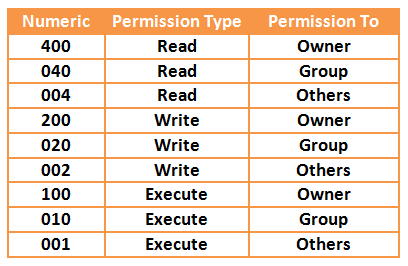
Your Own Linux Chmod Basics Of Files Directories Permissions And Use Of Chmod
Chmod Cheatsheet Linux

Explaining The Difference Chmod X And Chmod A X Youtube

Use Of Chmod Command In Linux Devopsdex

Fun With Numbers In Chmod

Pdf Chmod Cheat Sheet Sunny Yiu
Q Tbn 3aand9gct I9jvgnhaxowmpzpaajfkfizchmnvqt Bi Nz3ljrxwqpkb8l Usqp Cau

Permission Denied For Chmod Cygwin On Windows 7 Doesn T Play Nice With Files In Dropbox
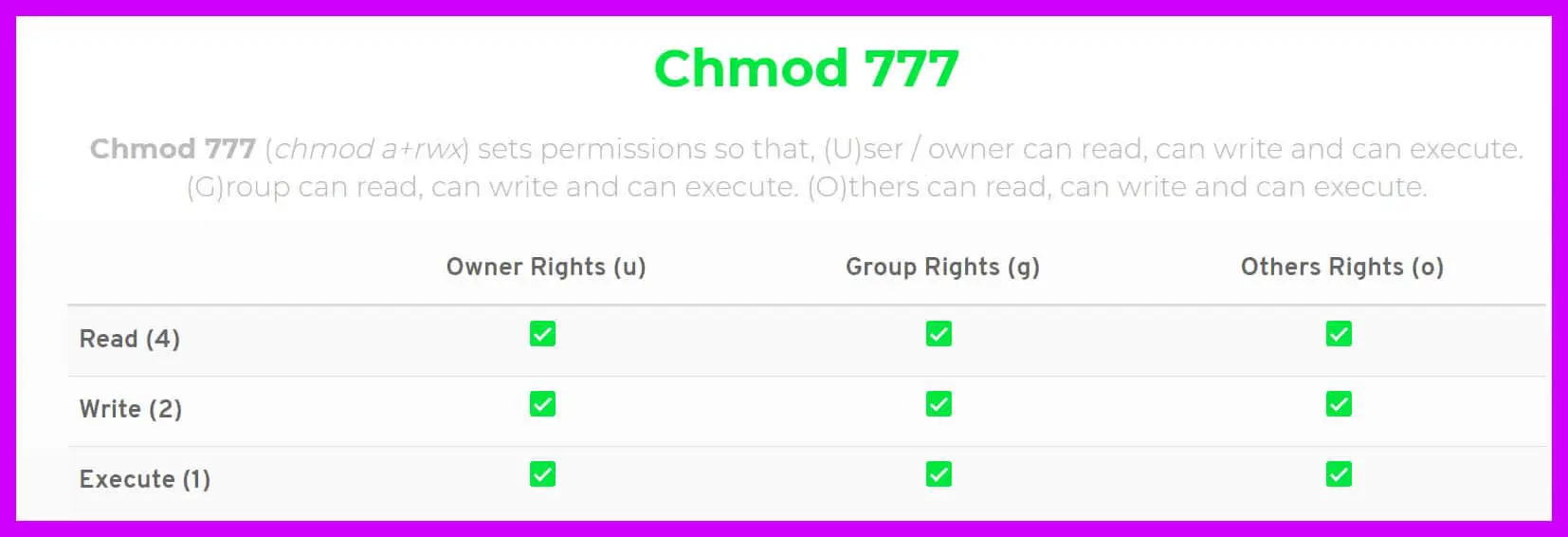
Chmod 777 A Definitive Guide To File Permissions
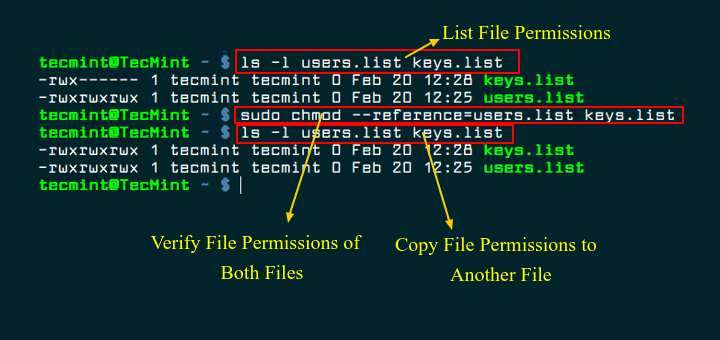
How To Copy File Permissions And Ownership To Another File In Linux

Linux File Permissions Tutorial For Beginners
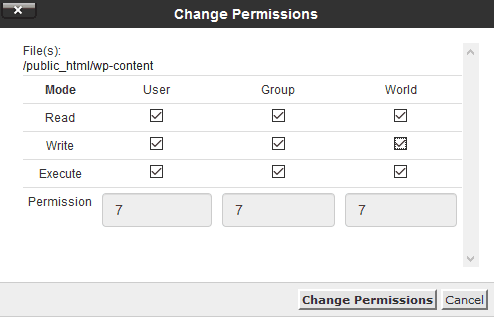
What Is Chmod 777 How To Change File Permissions For Linux Tech Ninja Pro

How Did The Number 777 In Chmod 777 Come Out Under Linux Laptrinhx

How To Chmod Files Only On Linux

Chmod Wiki Ask Ubuntu

Chmod Recursive Change Permissions Recursively On Files Folders

When Sudo Chmod 755 Library Tomcat9 Bin Sh Occurred An Error Stack Overflow

Bash Chmod U X Problem In Case Statement In Shell Script Ask Ubuntu
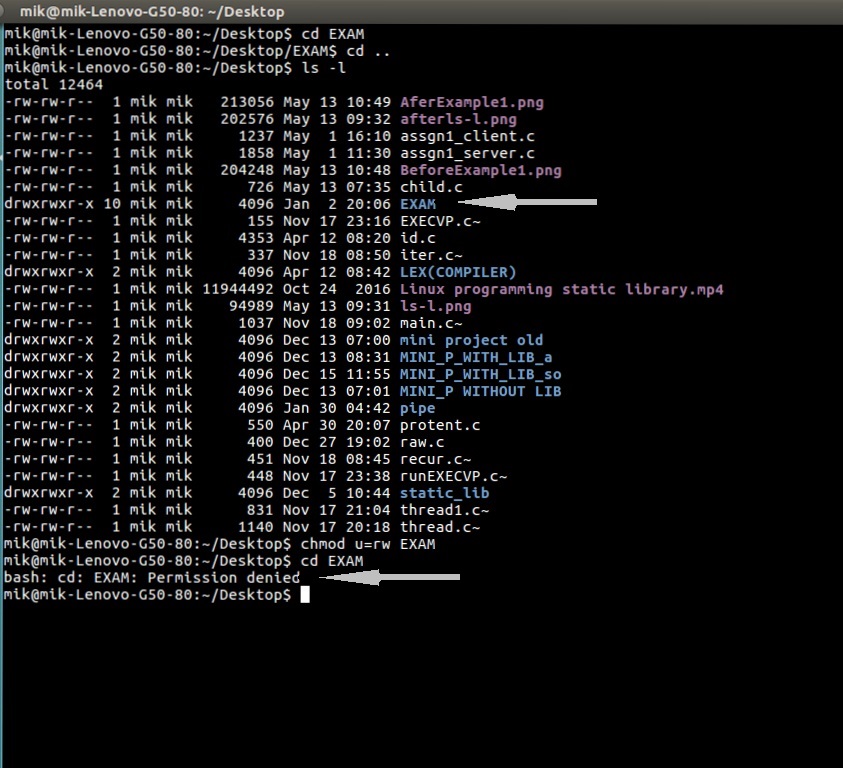
Chmod Command In Linux With Examples Geeksforgeeks

How To Add Chmod X On A File From Right Click Menu Service In Mac Super User

Linux And Unix Chown And Chmod Command Security Problem Illustrated Nixcraft

Chmod X Chmod
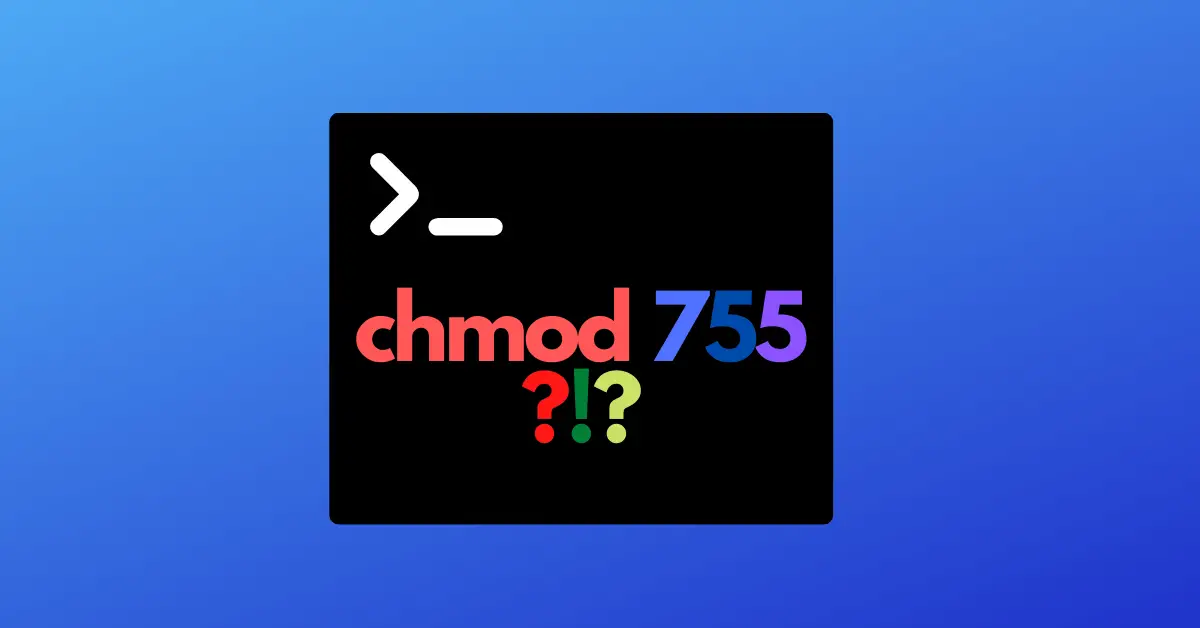
Chmod 755 Command What Does It Do Codefather

Lock Usb Devices With Chmod Command In Linux Tutorials

Directory How Can I Change Permissions Of A Folder Including Its Enclosed Files And Subdirectories Ask Ubuntu
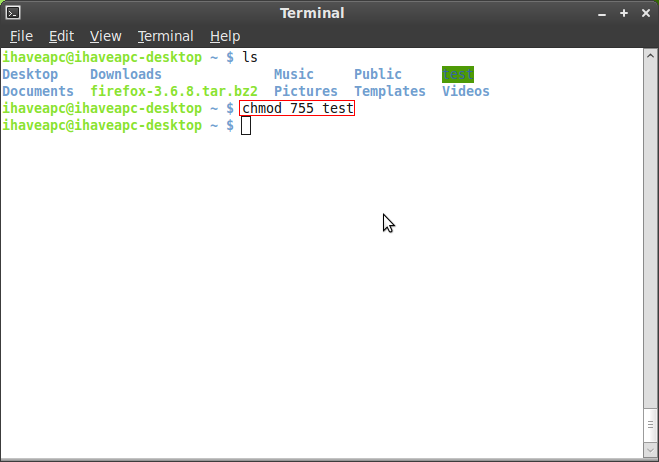
Linux Command Line Basics Part 4 I Have A Pc I Have A Pc
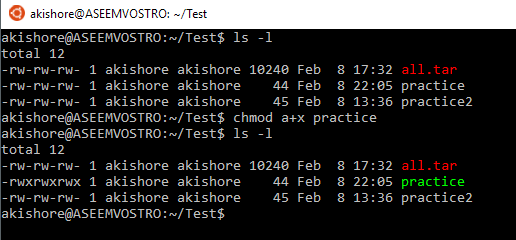
Understanding Linux Permissions And Chmod Usage

Linux File Permissions And Chmod Doug Vitale Tech Blog
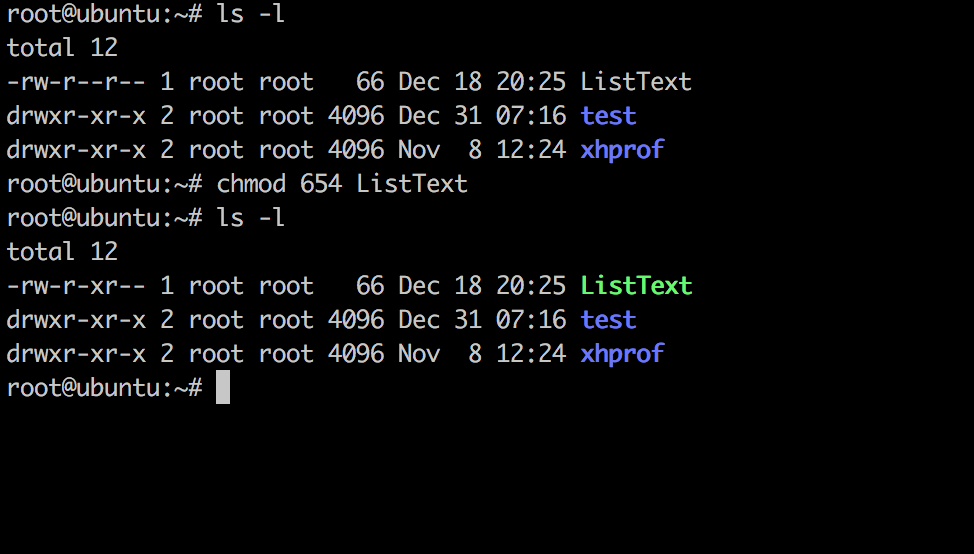
Linux Chmod Command Linuxfordevices

Chmod Wiki Ask Ubuntu

Devops Guy Chmod 777 Chmod R 777 Chmod Command Calculator T Co Qu4lhhoqjo

Linux File Permission Javatpoint
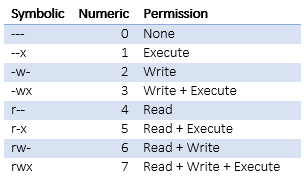
Introduction To Linux File Permissions Attributes Chmod Globo Tech

14 04 Chmod Not Working In A Non Super User Ask Ubuntu

What Is Chmod 777

Linux Chmod Chown Syntax And Chmod Chown Examples

Whatever You Knew About Chmod Is Wrong Alien Coders

How To Use Chmod Command In Linux Explained With Examples

What Did We Do When We Were Chmod 777 Develop Paper

How To Use The Chmod Command On Linux
Why Would Using Chmod 777 Recursively From The Root Cause A Linux Box To Not Boot I Could Understand This If I Were Limiting Permissions But Why Would Adding Permissions Cause This

Linux File Permissions Know The Reason Behind That Chmod 777 By Abhishek Chandra Medium
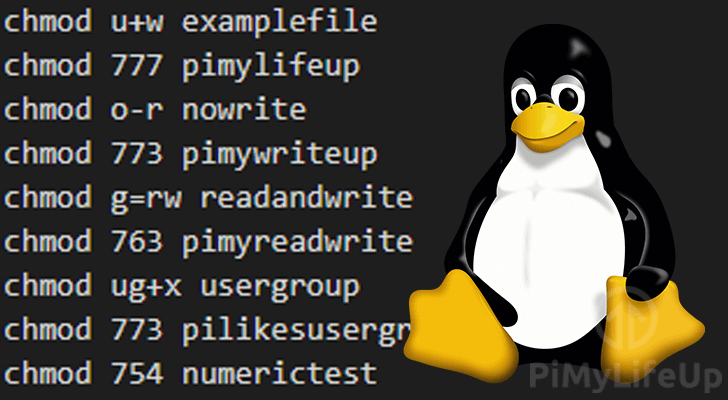
The Basics Of The Chmod Command Pi My Life Up

Chmod Chown Wsl Improvements Windows Command Line

Chmod Recursive Change Permissions Recursively On Files Folders

Chmod Recursive Change Permissions Recursively On Files Folders
Q Tbn 3aand9gcs Trmaopb41lzfo2wl Mi6olorurkywaddbudhnw Ne1mor3ct Usqp Cau

Chmod Not Working Q A Dataquest Community
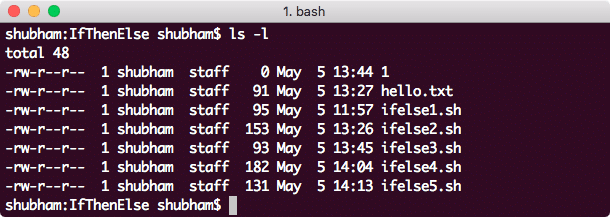
Linux Chmod Example Linux Hint

Chmod 755 Livecoding Foxdot Python Youtube

14 Permission And Modification Times

Chmod Command Tutorial How To Recursively Set Permissions In Sub Folders

How To Use The Chmod Command 2 Minute Linux Tips Network World

Chmod Command In Unix Learn Unix Online Fresh2refresh Com

Chmod 777 755 655 644 And More Permissions Linux Files Tutorials

Extropia Tutorials Introduction To Unix For Web Technicians The Chmod Utility

Chmod Unix Article About Chmod Unix By The Free Dictionary

Ownership And Permissions

Chmod X Windows Nativeyellow

Devrant A Fun Community For Developers To Connect Over Code Tech Life As A Programmer
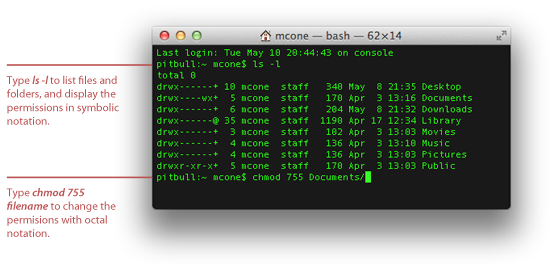
How To Set File Permissions In Mac Os X Macinstruct
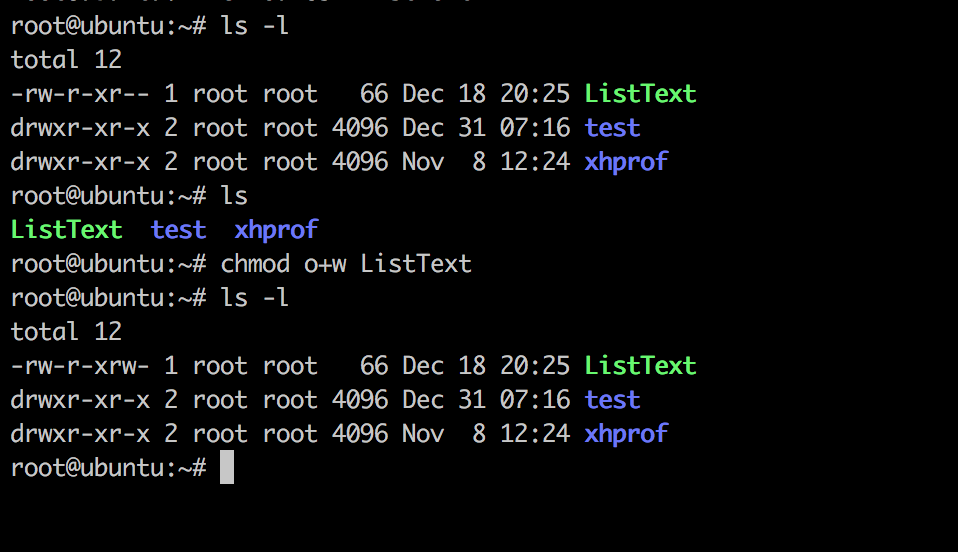
Linux Chmod Command Linuxfordevices
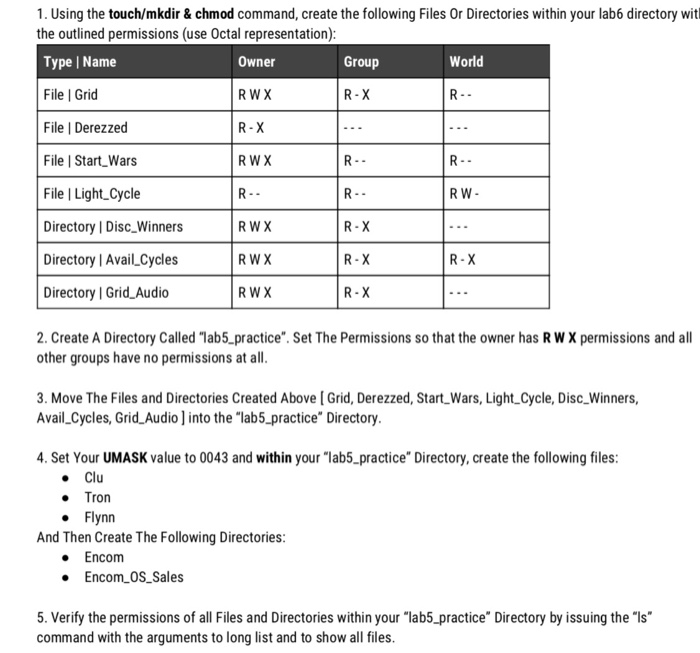
Solved 1 Using The Touch Mkdir Chmod Command Create T Chegg Com
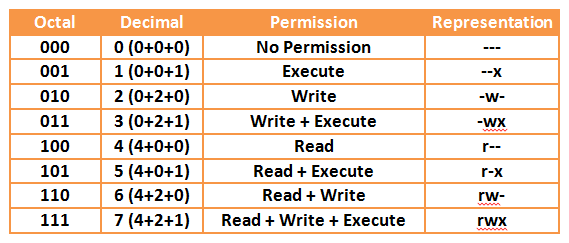
Your Own Linux Chmod Basics Of Files Directories Permissions And Use Of Chmod

Modify File Permissions With Chmod Linode

File Permissions In Linux Unix Vk9 Security

This Chmod Calculator Makes Creating Chmod Commands A Cakewalk Hongkiat

How To Use Chmod Command In Linux Explained With Examples

Explained How To Use Chmod Command Complete Guide Youtube

What Is Chmod How To Use Chmod For Wordpress File Permissions

Chmod Command Vichhaiy Welcome

Linux File Permissions Tutorial How To View And Change Permission

How To Use Chmod Change Mode Repair Your Pc Now

Javarevisited 10 Example Of Chmod Command In Unix Linux

What Causes Chmod To Not Work On An Ssh File In Osx Ask Different

9 Quick Chmod Command Examples In Linux



